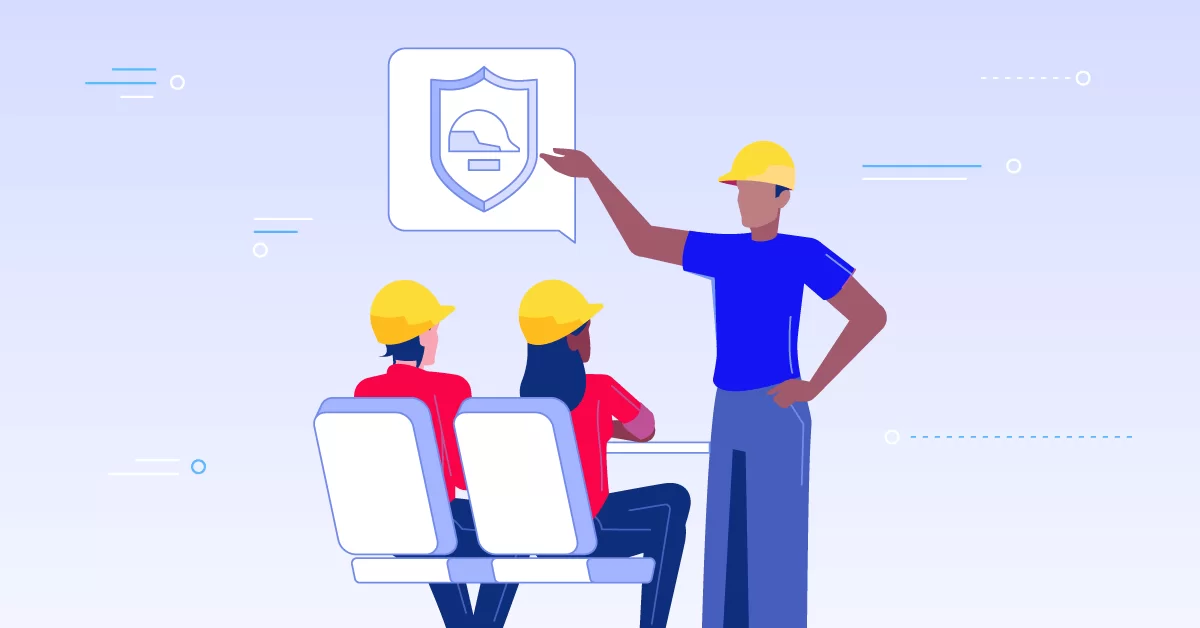How To Overcome 7 Obstacles That Compromise Your eLearning Development Timeline
Everything is going according to plan until disaster strikes. Some proactive planning and forethought may be able to save you from missed deadlines and unhappy clients, though.
Here are 7 obstacles that can throw your eLearning development timeline off course, as well as respective tips to help you stay on schedule and ensure that your eLearning team runs like a well-oiled L&D machine.
1. Ambiguous Learning Objectives And Expectations
You have the right tools and team members in place. All of your collaborators are aware of their respective tasks and responsibilities. However, nobody knows which common learning goals or objectives they are working toward. In other words, the pieces are in place but the overall puzzle is still ambiguous.
Your eLearning team must clearly define the learning objectives, desired outcomes, and expectations beforehand. Meet with the client to discuss their thoughts and suggestions, and work together to come to a common consensus regarding the aim of the eLearning project.
This gives you a clear direction moving forward so that you don’t have to waste time second-guessing later on. In addition, you don’t have to worry about re-creating all of the eLearning content when the client finally clarifies the learning objectives.
2. Unexpected Revisions
One of the most time-consuming and frustrating obstacles you may encounter is unforeseen revision rounds. In most cases this ties into the first hurdle. However, it can also be attributed to ineffective prototypes or lack of client involvement.
Create a detailed sample so that the client can provide their honest opinion. For example, they would like to see more brand integration or video demos in the online training course. This helps to prevent lengthy revisions that you didn’t factor into the original eLearning development timeline. You might even consider a phase-based approach wherein the client reviews the online training materials after each section is complete.
3. Collaborator Conflicts
Anytime you have a group of people working together, there are bound to be some disagreements. However, a simple difference of opinion can quickly escalate into an all-out conflict that derails your eLearning development timeline. For this reason, it’s best to have conflict resolution protocols in place.
As an example, collaborators should try to settle the matter on their own or speak directly with the eLearning Project Manager to resolve the issue. It’s also a good idea to schedule weekly meetings so that everyone can get their thoughts out into the open instead of letting their emotions brew silently until they boil over.
Lastly, choose a Project Management online platform that gives your eLearning team the power to communicate and collaborate without limitations.
4. Ineffective Tools
You have to use a broad range of tools to get the job done and produce a high-quality deliverable. But what if the software you’re using is outdated or ineffective? You’ll have to spend time researching new tools and then pay for them out of your pocket.
Alternatively, you can simply carry on with the platforms you already have at your disposal, which can slow down the entire process. Either way, you run the risk of going over deadline and budget.
This can all be avoided by having the right tools on hand before you start the eLearning project. Identify the client’s needs, determine which software will achieve the desired outcome, and then factor the cost into your estimate.
5. Unrealistic eLearning Budget
The client wants all the bells and whistles on a tight eLearning budget. Or your eLearning team has neglected to calculate all the costs involved in creating the estimate. Both of these scenarios can put a wrench in your eLearning development timeline and slow it to a halt, as you’ll probably run out of resources before you’ve accomplished the goals.
This obstacle can be avoided by accurate estimates and realistic expectations. Clients should have an itemized break down of the fees involved, as many may not even realize the true cost of eLearning authoring tools, manpower, and maintenance.
6. Lack Of Skills And Experience
This applies both to the eLearning team and the client. Your collaborators may not have the skills you require to create effective eLearning content or use the available tools. This involves a steep, time-consuming learning curve. Likewise, the client might not be familiar with eLearning development.
Thus, they don’t provide you with the information you need or ask excessive questions that delay the eLearning project. In both instances, clearly defined roles and responsibilities are essential. Team members must know which skills are required for the job in advance so that they can bridge gaps, and clients should know that you expect them to participate in the process.
For example, they need to provide you with all the online training materials within the first week and then attend a “check-in” meeting every month.
7. Working With Dry And Dull Subject Matter
Your eLearning team is experienced and skilled. Clients provide you with regular input and maintain an open line of communication. But there is one obstacle that is out of everyone’s hands: boring subject matter. Unfortunately, there just are some topics that are more yawn-worthy than others and trying to liven them up can slow down the eLearning development process and delay delivery dates.
The secret to avoiding this hurdle is to tap into the power of your lateral thinking skills and get creative. Use a rapid eLearning authoring tool to add eye-catching media.
Incorporate interactive online training activities that foster immersion. Break the eLearning content into easily digestible lists, infographics, and other visual aids. Don’t let a dry and dull subject matter get the better of you!
These 7 obstacles may be formidable but you have the power to circumnavigate them by using the above tips and tricks.
This article may even help you plan for the unexpected well in advance, saving you the time and expense of having to deal with unforeseen roadblocks that compromise your eLearning development timeline.
Do you want your next eLearning course to be easily digestible and accessible to all online learners? Read the article 8 Tips To Create Digestible And Accessible eLearning Courses to discover how to create accessible eLearning courses that lead to long-term knowledge retention and recall.




